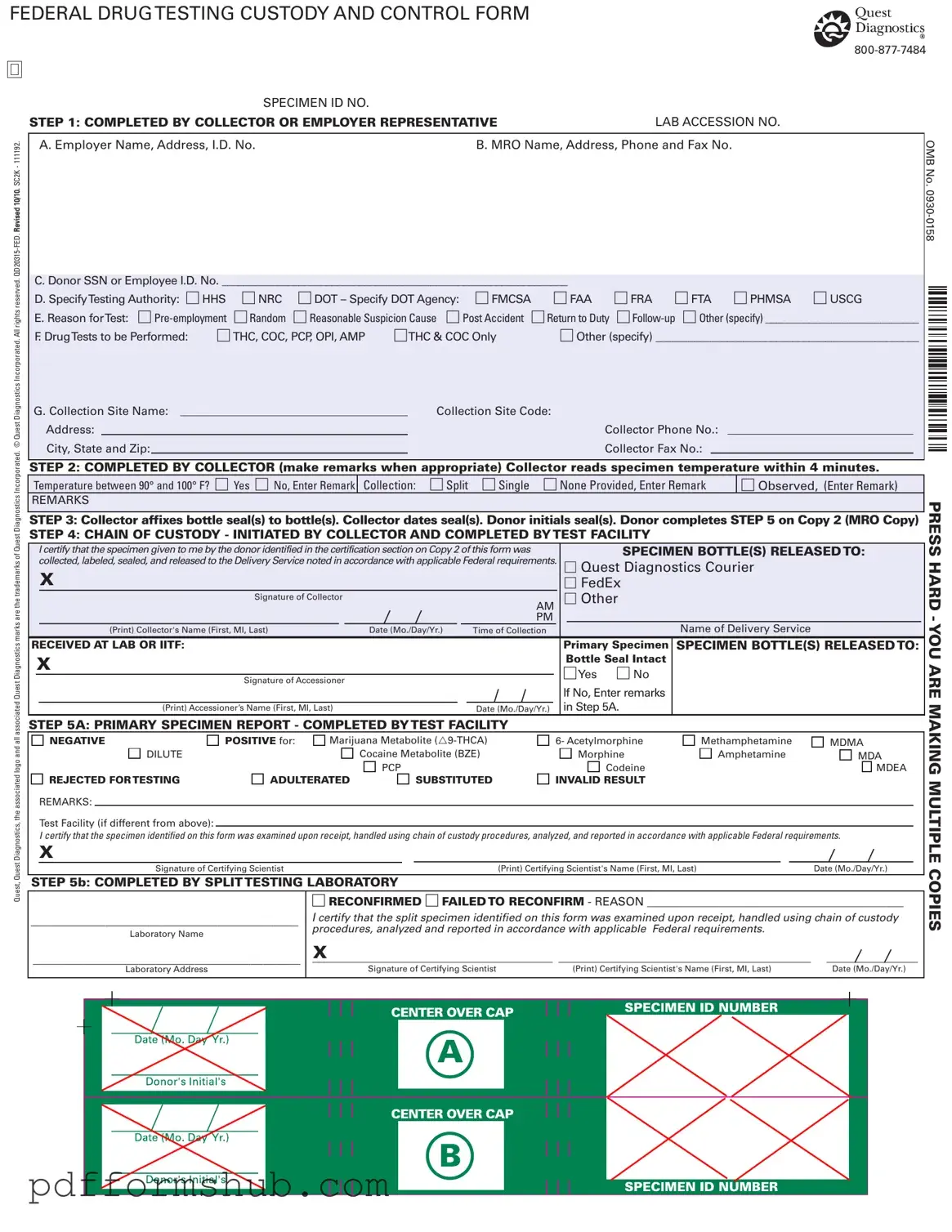The Drug Screen form is a crucial document used in the process of drug testing, particularly in workplace settings. This form is designed to ensure that the collection, handling, and testing of biological specimens adhere to strict federal guidelines. It includes essential information such as the employer's details, the Medical Review Officer's (MRO) contact information, and the donor's identification number. The form specifies the testing authority, which could be under the Department of Transportation (DOT) or other federal agencies, and outlines the reason for testing, whether it be pre-employment, random, or post-accident, among others. Additionally, it lists the specific drugs to be tested, such as THC, cocaine, and opiates, allowing for clarity on the substances being screened. The form also contains sections for the collector to document the temperature of the specimen, ensuring it falls within acceptable limits, and includes steps for maintaining the chain of custody to prevent tampering. Each stage of the process is meticulously recorded, from collection to analysis, with signatures required from both the collector and the certifying scientist. This comprehensive documentation helps protect the integrity of the testing process and ensures compliance with federal regulations.
